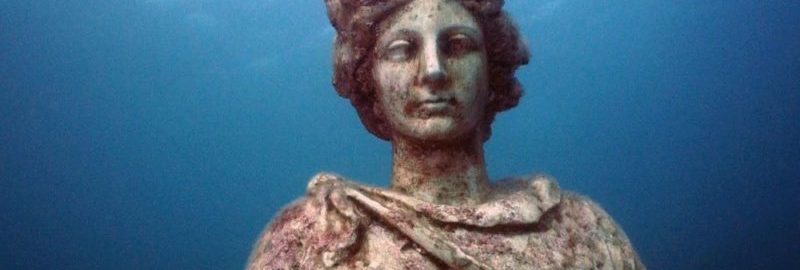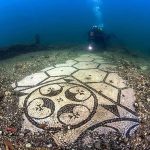Probably each of us has heard about the mythical, sunken, ancient land that Plato described in his sections. Is it really just a legend? It turns out that there may have been a grain of truth in Plato’s writings. I invite you to a joint journey through the ancient, sunken city of Baiae.
In fact, Baiae, because that is the original name, it lies under the water in the Bay of Naples, and more precisely in a volcanic crater from before 10 thousand. years. The name of the city, once inhabited by several thousand people, according to legend, comes from the burial place of Baios, a friend of Odysseus. It is an unusual place, visited by thousands of tourists every year, all due to its unusual character. Well, most of the city with an area of 176.6 hectares is almost 4 m underwater. A historic settlement from the time of the Roman Empire, it is under protection and has been located in a natural park since 2002.
One can only imagine the splendor and beauty of the ancient city, where even street layouts have been preserved to this day. It is not surprising then that this place was often chosen by patricians and Roman emperors (including Caesar) for leisure, especially, that there were hot springs there. Historic villas have survived to this day, including the residence of the Pisoni family, whose heirs were murdered on the orders of Nero. Another interesting villa that has survived to this day is the residence Protiro, around which a black and white marble floor has survived. Underwater is still one of the largest commercial harbors in these lands – Portus Julius (Puteoli ). In the depths of the Bay of Naples, you can find a palisade that once protected the port from storms. Nearby, there is also an Aragonese castle and huge statues, incl. young Dionysus, or characters from “The Odyssey”.
Unfortunately, already in the 4th century BCE the first movements of tectonic plates, which heralded the inevitable destruction of the city, were recorded. This phenomenon is called bradisismo by specialists, i.e. regular alternating lowering and raising the ground, which is related to the filling and emptying of volcanic chambers with lava. Later, further lowering of the area took place, and finally, the entire settlement disappeared under the water…
This unusual find is a real treat for archaeologists and lovers of ancient Rome. The possibility of diving and sailing past the ancient marble statues covered with seaweed guarantees an unforgettable experience! Baia may not be such a popular destination for tourists as Pompeii or Ercolano, but it is definitely worth visiting Naples’ Atlantis.








